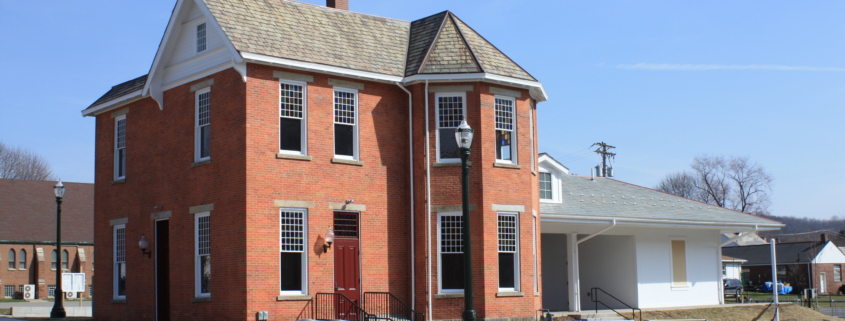Preserving historic architecture is very important as it represents a tangible link to our cultural heritage and serves as a valuable connection to the past. The builders understand the significance of maintaining the historical, architectural, and cultural value of these structures for future generations. Restoration and conservation techniques employed by members of The Builders Association play a pivotal role in safeguarding these architectural treasures. In this blog, we will delve into important considerations for historic architecture and explore the key conservation techniques implemented to maintain the integrity, beauty, and legacy of these iconic structures.
Understanding the Significance of Historic Architecture
Historic architecture is a direct connection and reflection on our cultural heritage, offering insights into architectural styles, craftsmanship, and historical contexts. These structures hold immense value in terms of their architectural value, cultural symbolism, and contribution to modern building principles. Preserving historic architecture ensures that future generations can appreciate and learn from these rich architectural treasures.
Documentation and Research
Before embarking on restoration and conservation projects, thorough documentation and research are crucial. Historical research provides essential insights into the building’s original design, materials, construction techniques, and historical value. Detailed documentation through photographs, drawings, and written records captures the building’s existing condition and guides decisions made during the restoration process, ensuring as much originality is maintained.
Conservation vs. Restoration
In preserving historic architecture, an essential technique is to differentiate between conservation and restoration. Conservation focuses on stabilizing and protecting the existing structure, reducing interventions that may alter its the original build. The goal of restoration is to recreate the building’s original appearance and function by reversing previous alterations and addressing decay or damage. Striking a balance between conservation and restoration ensures the preservation of the building’s historical integrity while allowing for necessary repairs for safety and longevity.
Structural Stability and Rehabilitation
Structural stability is a critical aspect of historic preservation. Assessing the building’s structural integrity and identifying areas of concern are fundamental steps. Reinforcement techniques, such as steel bracing or carbon fiber wrapping, may be employed to enhance stability while minimizing visual impact. Special care is taken to ensure that any modifications are sympathetic to the building’s original design and do not compromise its authenticity.
Material Conservation
Preserving the original building materials is a key consideration in restoration and conservation projects. Specialized techniques are employed to conserve historic materials, such as masonry, wood, plaster, and metalwork. Cleaning methods that avoid damage or discoloration, help remove dirt and pollutants without compromising original aesthetic. For damaged or deteriorated elements, careful repairs or replacements using compatible materials are carried out to match the original appearance.
Reinstating Architectural Details
Historic buildings often feature intricate architectural details that define their character. Restoring or reinstating these details is an important aspect of preservation. Skilled craftsmen utilize traditional techniques and materials to recreate missing or damaged architectural elements. This may involve replicating decorative moldings, cornices, windows, or ornamental features, ensuring they align with the original design and historical documentation.
Public Engagement and Education
Preservation of historic architecture goes beyond physical restoration; it involves raising awareness and engaging the public. Educating communities about the significance of these structures fosters a sense of pride and responsibility. Public engagement initiatives, such as guided tours, exhibitions, and educational programs, help people understand the value of historic architecture and support ongoing preservation efforts.
Contractors Involved in Historic Preservation
The contractors involved with historic architecture preservation and restoration require a deep understanding of the unique challenges and intricacies of working on such buildings. This also heavily depends on the historic building in reference. Historic preservation projects typically involve contractors with expertise in masonry and stonework, as they are responsible for repairing and restoring the building’s original stonework. Carpenters skilled in traditional woodworking techniques are essential for recreating intricate moldings, trim, and wooden elements. Roofing specialists who can work with period-appropriate materials, such as slate or clay tiles, are crucial to maintain the historical integrity of the structure. Furthermore, contractors with skills in repairing window and doors, as well as plaster and paint conservators, may play vital roles in preserving the authenticity and historical value of these architectural treasures. Collaboratively, these contractors ensure that the legacy of our past remains intact and vibrant for generations to come. Regionally, we have a lot of rich history since our area was considered part of the original 13 colonies, making it even more imperative to maintain symbols of independence. Learn more about available contractors through The Builders Association Membership Directory.
Historic Architecture Overview
Preserving historic architecture is a collective responsibility to safeguard our cultural heritage. Through the above techniques, these architectural treasures can be protected, allowing future generations to appreciate and learn from them. By employing a thoughtful balance between conservation and restoration, and engaging the public, we can ensure that our historic buildings stand as enduring testaments to our past while contributing to the beauty and identity of our present and future.
Image taken at the P.L. & W. Train Station in Lisbon, Ohio



